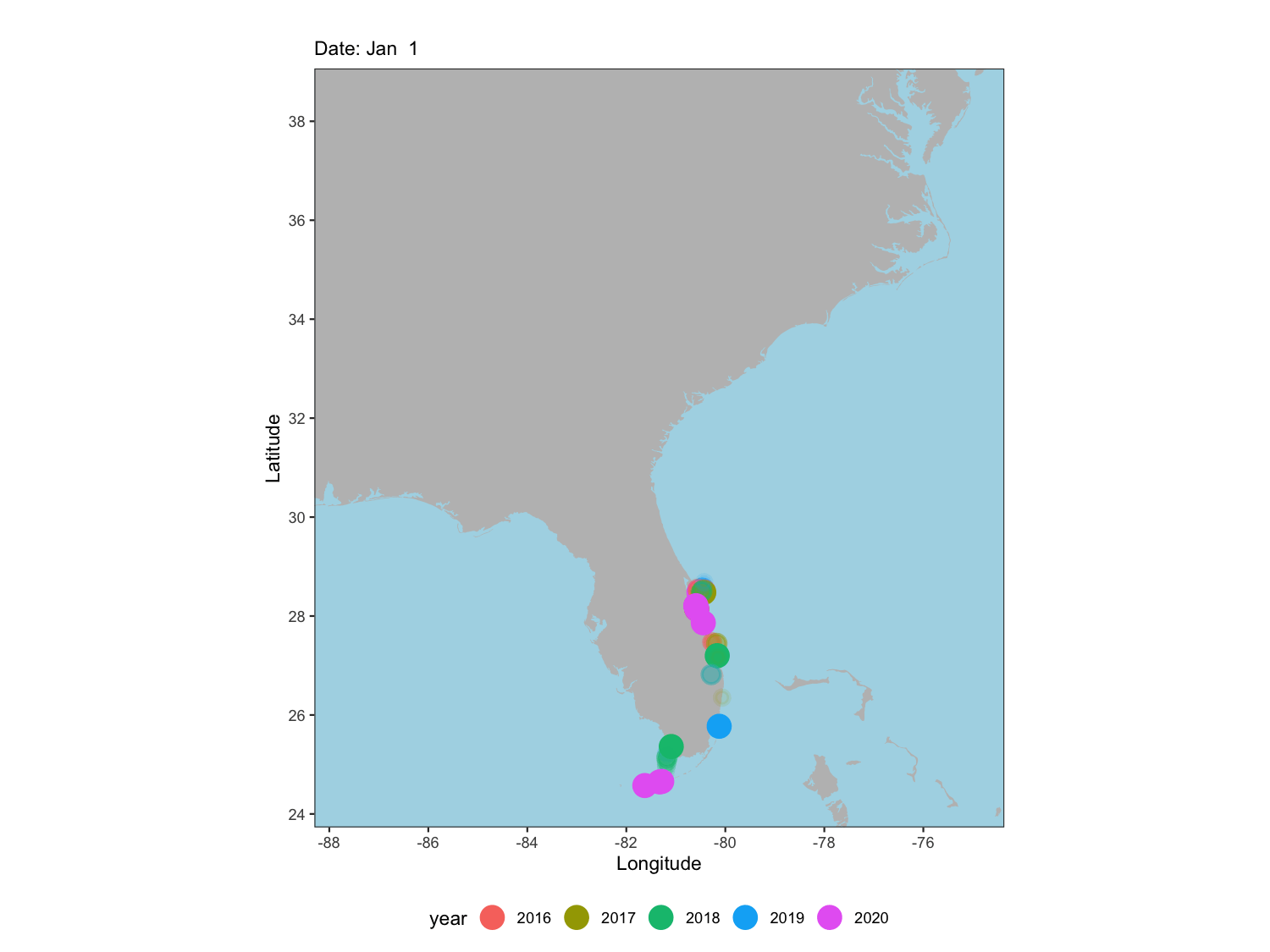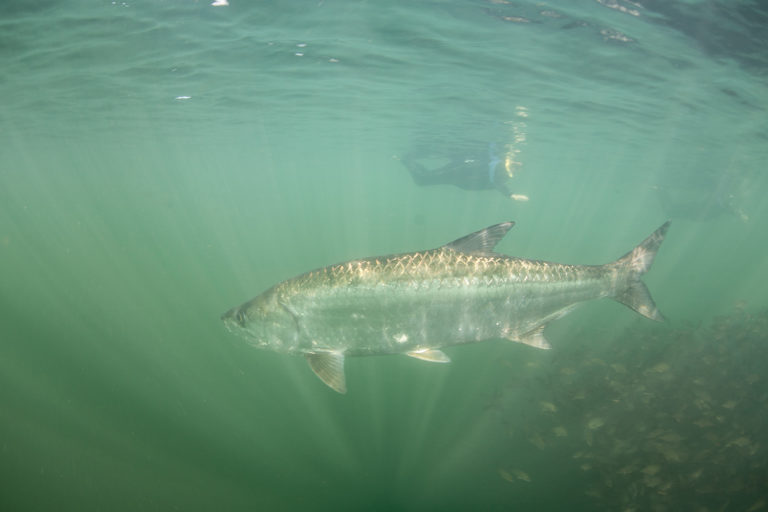The Tarpon Acoustic Tagging Project, sponsored by Maverick Boat Group, is a collaborative program designed to broaden our understanding of tarpon movement and habitat uses. The results have helped shape conservation measures, including the identification of critical habitats for protection and improvements to fishing regulations.
Until the Tarpon Acoustic Tagging Project began in 2016, little was known about tarpon movements and habitat uses. Satellite tagging provided spatial and temporal data that was limited to tarpon weighing 80 pounds and larger. After a few months, most satellite tags detached from the fish, making it difficult to study their movements over multiple years. Acoustic telemetry has helped to combat these limitations. Acoustic tags provide the ability to track tarpon for five years. They are also small enough that they can be used on juvenile tarpon as small as five pounds and on adult tarpon as large as 200 pounds.
How does acoustic telemetry work? A small tag is surgically implanted in the fish’s abdomen before release. When the tagged fish swims within range of an underwater receiver, the receiver detects and stores the tag’s unique code. BTT and collaborators have deployed approximately 100 receivers, but we are also able to take advantage of the network of receivers being used by collaborators studying a range of species from redfish to sawfish. This vast network exceeds 4,000 receivers deployed from Chesapeake Bay to the Gulf of Mexico. As scientists detect tagged fish on their receiver networks, they share data with other scientists, effectively expanding the study area.
Over the course of the project’s 5-year tagging phase, 200 tarpon were tagged in waters ranging from Apalachicola, Charlotte Harbor, and South Florida, to Georgia and South Carolina. BTT scientists continue to collect and analyze the data generated by the tagged fish. Some of the data were used to support a tarpon catch-and-release amendment in North Carolina, which became law in February 2021. The project’s results will continue to help shape future conservation measures to ensure that the tarpon fishery is healthy and sustainable for generations to come.
Tarpon Acoustic Tagging Map

This map depicts the detections and movements of Atlantic tarpon tagged with acoustic transmitters. All years are concurrently playing with the date displayed in the upper left corner. The movements shown here are represented “as the crow flies,” thus the movement tracks may cross land.




